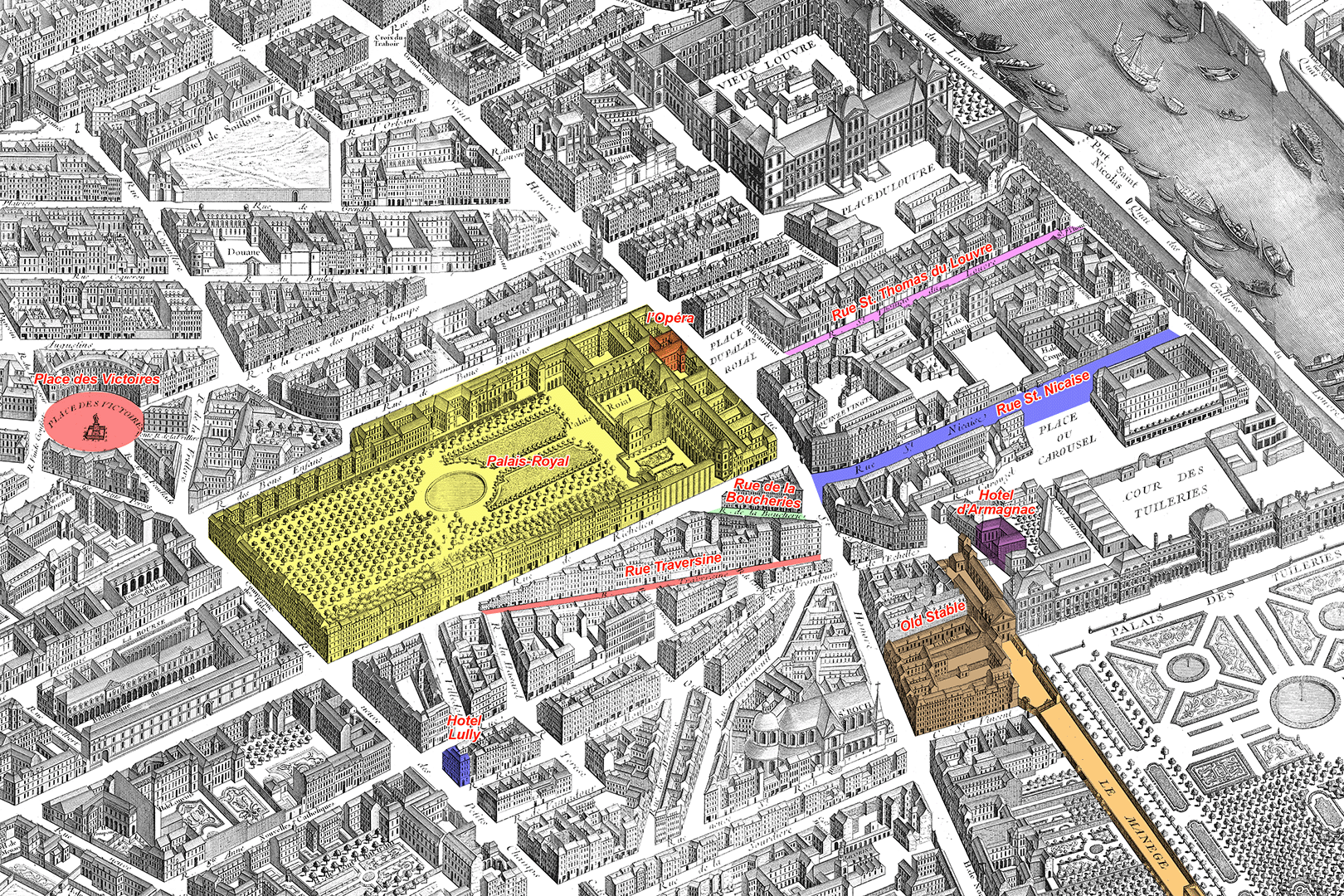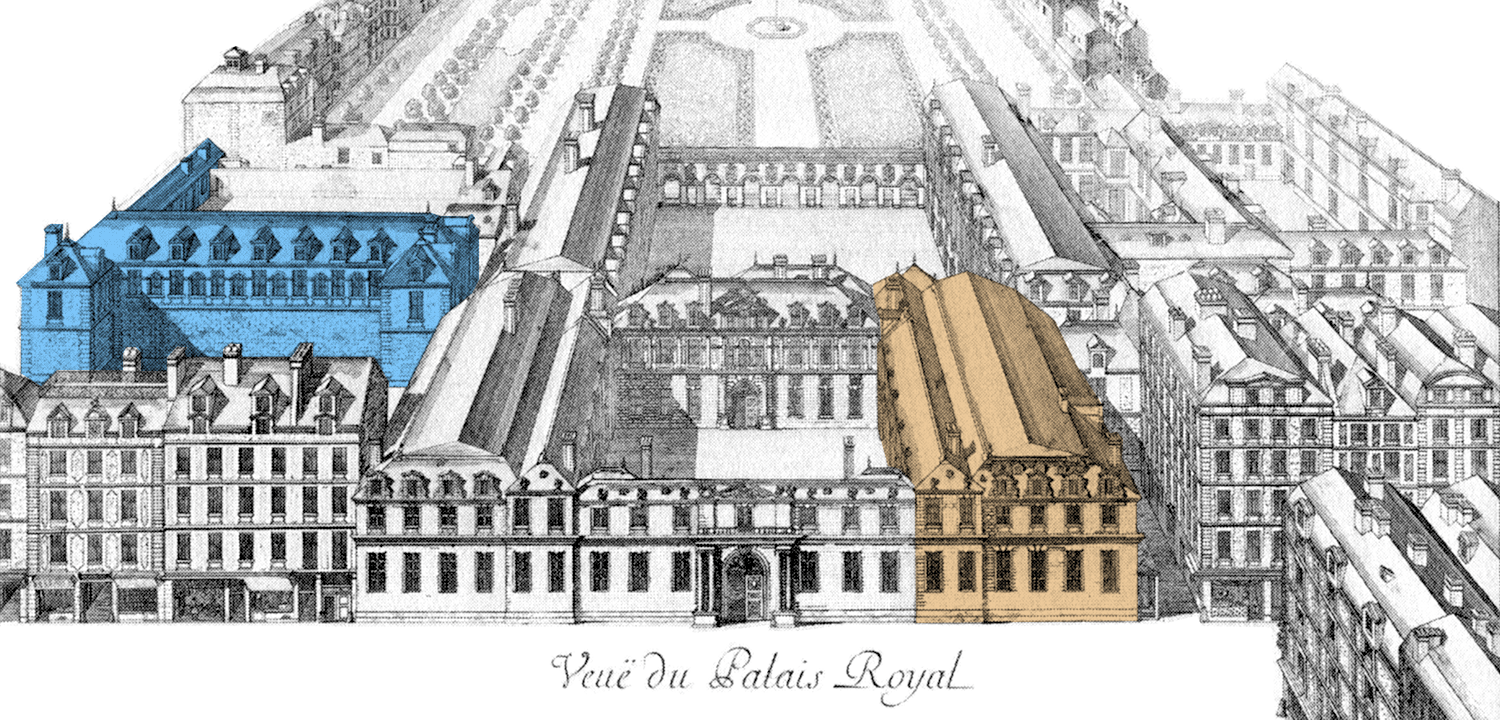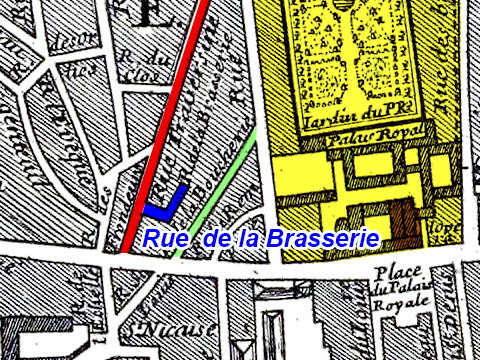Background: La Maupin’s Paris
A lot of the action in La Maupin, Mistress of the Sword is set in Paris. In this article I will focus particularly on the area around the Palais-Royal and the neighborhood of Butte St. Roche, locales connected to the Paris Opéra, and the original Grande Écurie. I expect to devote future articles to greater Paris, Versailles, and La Maupin’s journeys through France and Europe.
Two major factors connect Julie to this area: her career with the Opéra and her relationship to “Monsieur le Grand”, Comte d’Armagnac, the Grand Écuyer of France, who ran the Grande Écurie (the Great Stable) and trained the pages of the King.
We know that Julie’s father was d’Armagnac’s secretary, presumably from before her birth, and that she was educated among the pages at the Great Stable. From about the age of eight or nine, that would have taken place in the newly constructed stable across from the Palace of Versailles, but before that, d’Armagnac had a home adjacent to the Tuileries Palace and the stables and the manège, the school where the pages learned horsemanship. The school ran along the northern border of the palace’s famous gardens. We don’t know exactly where the secretary and his daughter lived, but I have given them an apartment as part of the stable complex, so that he would be near his employer. The Stable can be seen in brown in the lower right of the Turgot map above, with the manège highlighted in orange.
It is worth noting that the famous Turgot map, which the above image was taken from, was created more than 25 years after Julie’s death. I chose it for its isographic representation of buildings and terrain, which makes it easier to visualize the area as a whole, despite some details (such as the design of d’Armagnac’s home) being inaccurate. A less anachronistic flat view can be seen in an 1880 reproduction of Nicolas de Fer’s 1697 “Le Nouveau Plan de Paris” map, to the right.
Comte d’Armagnac’s townhouse, variously called both the “Hôtel d’Armagnac” and the “Hôtel de Brionne” (because Louis de Lorraine was both Comte d’Armagnac and Comte de Brionne) was originally built in 1676, but rebuilt for his son, Charles, in 1734, the year that the Turgot began to be published, so it looked different during the time of our novel. It is shown in purple close to the stables. (You may need to click on one of the maps to make it out.)
Of course, the Paris Opéra, or more correctly, l’Académie de Musique within the Palais-Royal, was at the center of La Maupin’s life. The Palais was originally built by Cardinal Richelieu. From 1661 until his death in 1701, the palace was the residence of Philip I, Duc d’Orléans, the King’s brother. During much of La Maupin’s life, his apartments were in the Palais Brion, shown highlighted in blue in the image to the right. The Opéra is shown in orange.
Rehearsals for the Opéra were typically held in houses owned by the director, originally Jean-Baptiste Lully, but in La Maupin’s day, his son-in-law Jean-Nicolas de Francine. Lully is said to have owned two or three houses in the neighborhood of Butte St. Roch, one at the corner of rue des Petits-Champs and rue Sainte-Anne, the second at the corner of the new rue Royale. I believe these two buildings are back to back. They are in blue in the lower left of the Turgot map, labelled Hotel Lully. Francine is said to have held rehearsals at a house he owned in that same neighborhood. He was Lully’s son-in-law, and I think ended up owning one of those two houses. Alternatively, the opera is said to have held rehearsals at the “Hotel de l’Academie” on the Rue St. Nicaise, which is shown in blue in the middle of the right side. In the novel, I have used the Lully house on rue Royale, as the references to Rue St. Nicaise seem to originate well after her death.
Parallel to the Rue St. Nicaise, the Rue St. Thomas du Louvre runs from the Place du Palais Royal (in pink) towards the Seine. It is to this street that La Maupin and the three indignant young men go to duel in the incident of Monsieur’s Ball. Finally, the scene of her thrashing of Dumesnil that opens the book (see Snippet #1) is the Place des Victoires, highlighted in red on the left side of the Turgot map.
Two other streets and a cul-de-sac across the Rue de Richelieu from the Palais-Royal play a part in the story. The first is the Rue Traversine (seen in red), where La Maupin is said to reside in the police reports from the the “Incident of the Key”. (No, I’m not going to explain that yet.) The other is the Rue de la Boucherie, shown in green. In La Maupin’s day, the butcheries that it takes its name from were still located along the street. There was also a “Cul-de-sac de la Brasserie” between the two near where they intersect the Rue St. Honoré. It is blue and labeled Rue de la Brasserie in the small excerpt from the Nicolas de Fer 1697 map to the right. A “brasserie” is essentially what we call a brewpub today. Putting these two together, I created “Le Bœuf Fringant” (The Frisky Ox) located somewhere in that area (perhaps off the cul-de-sac) where La Maupin and her friends go when they are feeling the need for a beef and brew.
If you’d like to be notified when there are more behind the scenes pages like this, or snippets from the novel (perhaps background on the “Incident of the Key” or the appearance of the Bœuf Fringant), you can join my La Maupin mailing list by clicking on this link to send me email, with a subject line mentioning “La Maupin feedback”.



